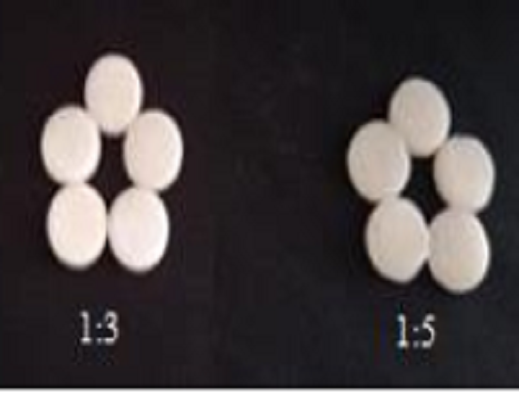Solid Dispersion of Acetosal Using Polyvinyl Pyrrolidone (PVP) K-30 in Tablets with Direct Compressing Method
Abstract
Acetosal is classified in the Biopharmaceutical Classification System (BCS) class II (low solubility, high permeability). Low solubility causes a decreased dissolution rate. Polyvinyl pyrrolidone (PVP) K-30 is an inert carrier easily soluble in water and can influence the solubility of a drug substance. Efforts to increase the solubility of acetosal make a solid dispersion system. This study aims to determine the effect of the solid dispersion system of acetosal: PVP K-30 on dissolution rate, the ratio of the solid dispersion with the best dissolution rate, and the physical properties of acetosal tablets formed in the dispersion system. Solid dispersions using the dissolving method with variations in the concentration of acetosal: PVP K-30 1:1, 1:3, and 1:5. The results of the dissolution test of acetosal in solid dispersion powder, i.e., PVP Formula 1:5, which has the highest dissolution percentage compared to formula 1:1 and 1:3 with the concentration this formula was 140.96 mg, dissolution percentage was 28.19±0,63% in 30 minutes. Statistical results by ANOVA test show a significant difference of 0.044 (p<0.05). The physical properties of tablets with a dispersion system show higher addition of PVP K-30. This result is related to slower disintegration time and lower friability.
Downloads

Copyright (c) 2023 Khuswatun Khasanah, Desy Nawangsari, Ikhwan Yuda Kusuma

This work is licensed under a Creative Commons Attribution-NonCommercial-NoDerivatives 4.0 International License.
Authors who publish with this journal agree to the following terms:
- Copyright on any article is retained by the author(s).
- The author grants the journal, the right of first publication with the work simultaneously licensed under a Creative Commons Attribution License that allows others to share the work with an acknowledgment of the work’s authorship and initial publication in this journal.
- Authors are able to enter into separate, additional contractual arrangements for the non-exclusive distribution of the journal’s published version of the work (e.g., post it to an institutional repository or publish it in a book), with an acknowledgment of its initial publication in this journal.
- Authors are permitted and encouraged to post their work online (e.g., in institutional repositories or on their website) prior to and during the submission process, as it can lead to productive exchanges, as well as earlier and greater citation of published work.
- The article and any associated published material is distributed under the Creative Commons Attribution-NonCommercial-NoDerivatives 4.0 International License.





_copy1.png)










